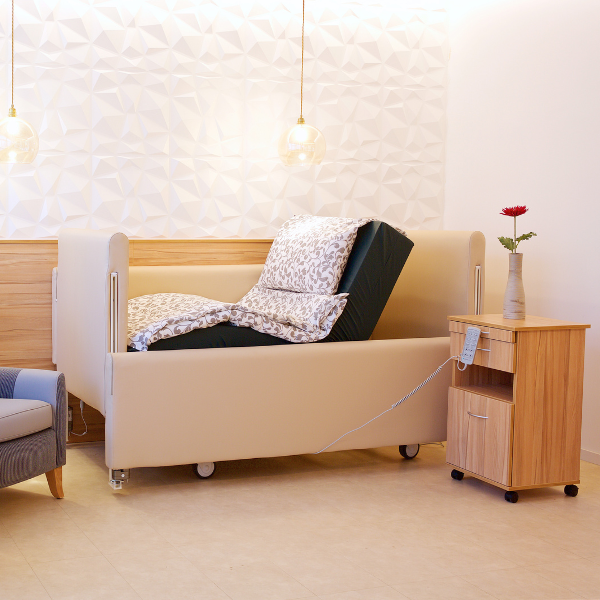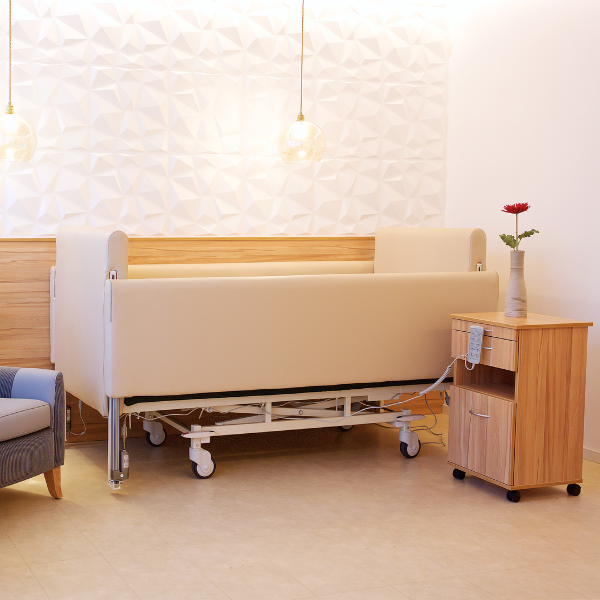Order before 4pm and select Express Courier Delivery for Next Working Day Delivery
An Occupational Therapists Experience in Specifying Our Huntington's Bed
We recently spoke with an Occupational Therapist (OT) who had specified our Huntington’s Bed for a client with severe chorea movements, to ask for her feedback on how the bed had performed in practice. Specially designed to minimise the risk of injury, our Huntington’s Bed features four highly padded protective sides and a sturdy construction to absorb constant, forceful movements. It is also equipped with a moisture-resistant, pressure-regulating mattress to enhance comfort, maintain hygiene, and reduce the risk of pressure sores by supporting skin integrity. We are proud to be the sole supplier of this specialist Huntington’s Bed in the UK. Read below to hear her experience with the Huntington’s Bed.


Case Study: Delivering Safety and Comfort with the Huntington’s Bed
The client, a resident living with advanced Huntington’s Disease, experienced severe chorea movements, putting him at significant risk of self-injury and bed damage. Traditional beds and padding systems were unable to meet the safety and comfort requirements posed by the intensity of his involuntary movements.
Recognising the client's complex needs, the Continuing Healthcare (CHC) team acknowledged the suitability of the Huntington’s Bed and agreed to funding. Initially, the panel was hesitant to sign off on the bed due to its higher cost, suggesting alternative lower cost beds such as cocoon padding systems. While these systems may offer a degree of protection for individuals with milder symptoms, they are not appropriate for severe chorea. Traditional cocoon designs, or beds marketed as “suitable for Huntington’s” often fail when faced with the extreme physical side effects of more severe cases. Following a thorough review, the panel approved the Huntington’s Bed. Once installed, the impact on the client's wellbeing was immediate and profound.
The client, who no longer communicates verbally, showed visible signs of contentment. His body language conveyed a new sense of relaxation and comfort, clearly settled and at ease. During a recent visit, the OT witnessed the bed in use during a hoisting procedure. Although the client's chorea caused his feet to strike the side of the bed - a common occurrence with his level of chorea - the design features of the Huntington’s Bed ensured that there was no risk of injury. Had an alternative bed been used, without heavy duty internal and external padding, the risk of harm would have been significant. Not only this, but the carers noted the significant benefit of the powered side rails, allowing single-person operation of the bed; a task that previously required two carers. This simple feature provides extra support to caregivers, minimising caregiver strain when delivering personal care.
This case highlights the critical difference the right specialist equipment can make. The Huntington’s Bed proved essential in ensuring safety, comfort, and dignity for a vulnerable resident with severe Huntington’s Disease. This experience also reinforces the critical role of professional clinical judgment when specifying high-dependency equipment. By standing firm on the necessity for the Huntington’s Bed, the OT ensured the very best outcome for their client, giving them a higher quality of life.
If you have any questions about the Huntington's bed, give our Huntington's Bed Expert a call on 01743 440 011, or email sales@berwickcare.co.uk to arrange an Online Video Session to view the bed.

